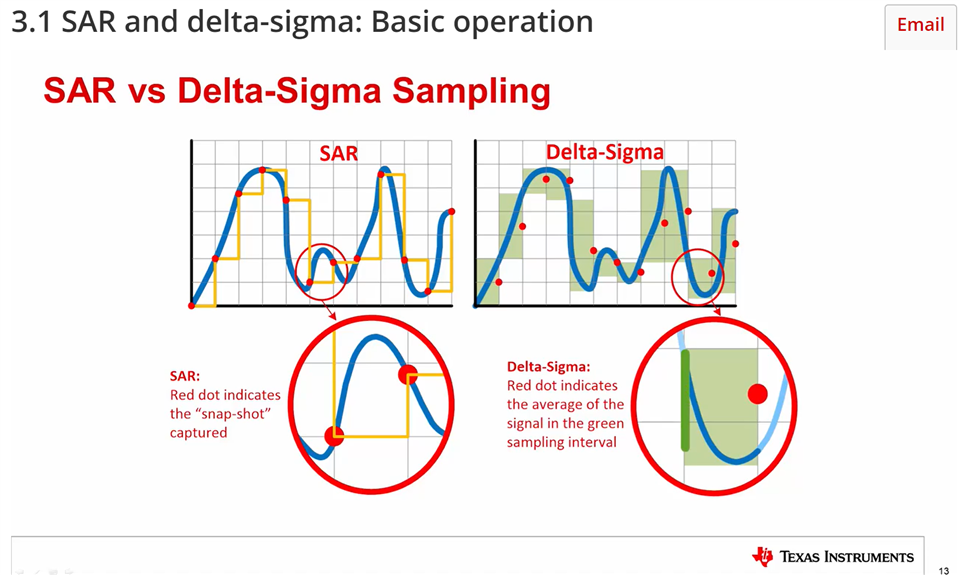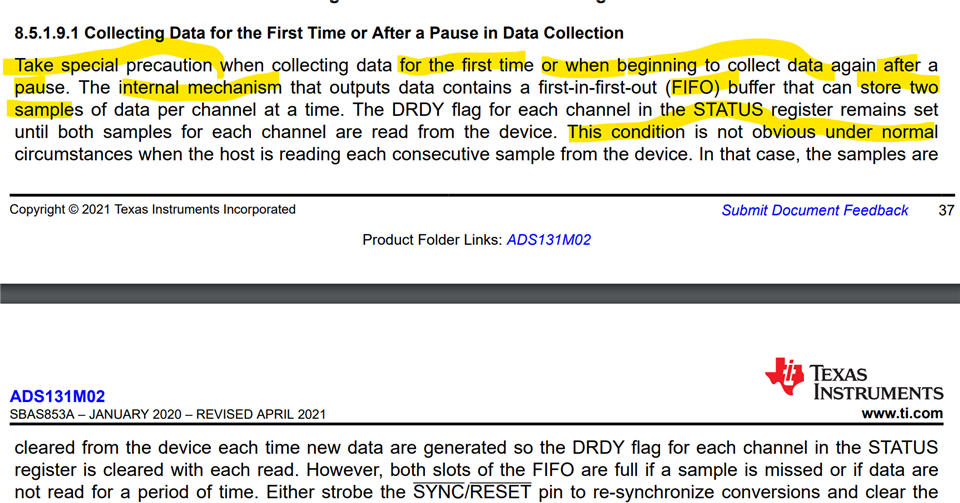helllo:
There are two questions, hope you can help me,
Question 1 How is the response time calculated?
The default configuration: data output rate is 4K ,external crystals is 8.19Mhz
When there is an excitation input, such as 1V, how long after the ADC output data will remain stable?
Question 2 Is it feasible to read the data periodically?
The default configuration: data output rate is 4K ,external crystals is 8.19Mhz
For example, read the value every 300us (read only once). Is the data real time, or is it 300 milliseconds old?



